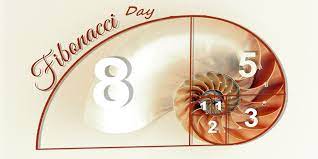November 23, 2022 is Fibonacci Day. Also known as Leonardo of Pisa and Leonardo Fibonacci, Leonardo Bonacci invented a pattern of counting that continues to influence math and technology today. The pattern consists of numbers that are the sum of the previous two numbers (1, 1, 2, 3, 5, 8, 13, etc.). This sequence is used in computer science, stock trading, architecture and design.
When I discovered the sequence, it popped up all over the place. Nature is full of Fibonacci patterns, from DNA to hurricanes, and some call Fibonacci sequences "nature's secret code."
History:
Leonardo Bonacci (later known as Fibonacci, Bonacci's "son"), one of the most important mathematicians of the Middle Ages, invented a series of numbers that are constantly present in nature, physics and design.
Born to an Italian merchant family, young Leonardo traveled with his father to North Africa, where he was exposed to his Hindu Arabic numeral system. Including zero and limited to 10 characters, this system is much more agile and flexible compared to the unwieldy Roman numeral system. In 1202, Fibonacci published Liber Abaci, introducing Europe to the Hindu Arabic system and its famous number sequence.
Starting with 1, 1, 2, 3, 5, the Fibonacci sequence is created by adding the previous he two numbers to get the next number. The first example in the Fibonacci series dealt with the growth of rabbit populations. As you start with one pair and that pair carries a new pair each month, the rabbit population increases at a rate that matches that number pattern.
The golden ratio is a ratio related to the Fibonacci sequence, which is also common in nature, around 1 to 1.6. This relationship is evident in tree branch patterns, fruit seed distributions, galactic spiral arms, and many other natural and man-made objects.
Fibonacci Day gives us the opportunity to celebrate this important mathematician and marvel at how mathematics permeates all of us. The Fibonacci sequence can be used to calculate the proportions of countless things on earth and beyond. For example: B. Animals, plants, weather patterns, and even galaxies. If you stop and observe your surroundings, you will begin to notice the familiar swirl.












